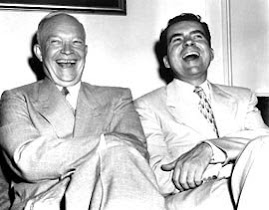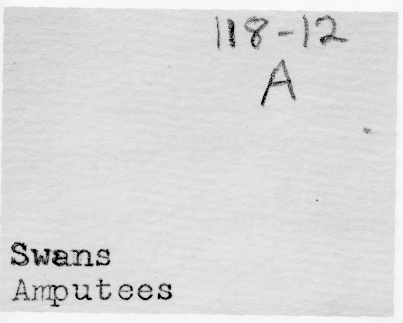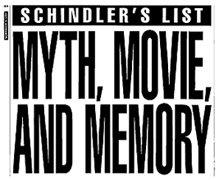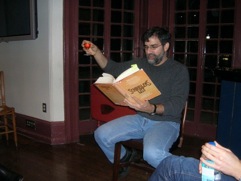 Not quite a year ago I gave a short paper on sound in Wallace Stevens, at a session that was part of the cluster of sessions on the conference-wide theme, "the sound of poetry," at the Modern Language Association's huge annual gathering. I opened with this simple assertion:
Not quite a year ago I gave a short paper on sound in Wallace Stevens, at a session that was part of the cluster of sessions on the conference-wide theme, "the sound of poetry," at the Modern Language Association's huge annual gathering. I opened with this simple assertion:If Stevens contended that “There is a sense in sounds beyond their meaning”; if he argued that poetry “makes us listen to words when we hear them, loving them and feeling them, makes us search the sound of them, for a finality, a perfection, an unalterable vibration”; and if he insisted that “[a]bove everything else, poetry is words…[and] words, above everything else, are, in poetry, sounds” – then why hasn’t the critical response to Stevens put sound at the center of the discussion? Here are six reasons: (1) fear of a mannerist reputation; (2) guilt by association with the non-innovative; (3) Hi Simons; (4) Stevens’ dull-seeming poetry readings; (5) a lagging interest among critics in sound technology; (6) a certain deafness in the project of disclosing Stevens’s politics.
I've been writing a little more about this topic, and have said my piece, more or less, on what might seem the least interesting and most obscure and intramural of the 6 reasons: Hi Simons. So here's more on Hi.
Hi Simons, the first to ask Stevens in any sort of systematic way about the sound of words, was an amateur critic. He was unconfident and awed, critically a plodding workaholic, star-struck around Stevens’ replies, and aware of his own tendency to believe utterly whatever Stevens said. As he told a close friend of Stevens, who in turn told Stevens: “I work so slowly that I am constantly embarrassed about it . . . . I often doubt that I possess that ability to carry water on both shoulders which Mr. Stevens cultivated so successfully . . . twenty-five years ago” (unpublished letter from Hi Simons to Arthur Powell). Simons was an independent critic whose daily life was consumed by his work as a publisher of medical textbooks in Chicago. He seems to have deliberately misled Stevens by continuing to imply for several years that he was preparing a bibliography even well beyond the point of posing merely bibliographical questions; their earliest exchanges, beginning in 1938, were all about tracking Stevens’ old appearances in periodicals, but soon letters arrived from Chicago requesting line-by-line close readings. A number of them asked directly or indirectly about the meaning of the sounds words make—for Simons ever the most difficult aspect of the verse to follow. Stevens’ replies show that he was aware of Simons’ awe, and his letters—saying for instance that the meaning of “The Comedian as the Letter C” was in the sound of the letter C—were sometimes toneless yet overstated, sometimes oddly ironic, and occasionally just shy of toying with the rookie close reader; alternatively, they were literalistic in the extreme. Once Stevens began to hear (first from others, then, confessionally, from Simons himself) that Simons hoped to write a huge critical biography—“an affair . . . larger than Horton’s work on Crane, something like Foster Damon’s on Amy Lowell” (unpub. letter from Duncan to Stevens), a prospect horrifying to Stevens, who hated the idea of biographical readings—the poets’ answers to the critic’s request for detailed response seemed ironically to bear out, rather than to contradict, his principle against authorial explanations, as he described this tenet to Simons directly: “I made up my mind not to explain things, because most people have so little appreciation of poetry that once a poem has been explained it has been destroyed.” Or, more bluntly when the critic’s questions were about a poem whose form turns on the limits of words as sounds, “A paraphrase like this is a sort of murder.”
 Here the homicide victim was “The Man with the Blue Guitar.” The question Simons posed about unreality in canto XVIII might well have led Stevens to discuss how the sound of the “Sea of Ex” negates the negation of intelligible language in the poem. The canto is a dream of the sort that defies the term “dream” (“to call it a dream” is the best we can do). And the rest is repetition, words crossing the senses (the guitarist’s “long strumming on certain nights / Gives the touch of the senses, not of the hand”) such that the thing, the idea of the thing in the phrase “things are they are,” is lost in the ringing of repeated, modulated phrasing: “A dream no longer a dream, a thing, / Of things as they are, as the blue guitar” etc. Thus “Ex” marks a poetic spot beyond sounded sense-making, a place toward which the poem’s language drifts. Yet, especially if we’ve read Simons’ letter (now housed at the Huntington Library), we can sense in Stevens’ reply to Simons that he knew he needed first to help his correspondent make basic sense of the exclusive visual scene, so that the “sense of irreality often in the presence of morning light on cliffs when they rise from the sea” engages image by analogy as a didactic tool. Impressionism here is an analogy to irreality, not a theme of the poem, nor its aesthetic ideology or mode. The canto uses the sound of words to stipulate irreality too, yet the brief explanation, published in Letters without, of course, the incoming letter from Simons, nor the context of the imbalanced power relationship, seems definitive. There are at least a dozen similar readings. The same confusion, for instance, seems to derive from Stevens’ answers to Simons’ queries about the Arabian in the room in canto III of the “It Must Be Abstract” section of Notes toward a Supreme Fiction. In the margin of Simons’ incoming letter, next to the question as posed, Stevens wrote in pencil: “The Arabian in the room & the unscrawled fores (the vagueness – undecipherable) – is the moonlight” (letter to Simons). He was hardly avoiding the centrality of the “chant” and of the “damned hoobla-hoobla-hoobla-how” here; rather, he was literally responding to what he thought Simons needed to get along section by section in the epic.
Here the homicide victim was “The Man with the Blue Guitar.” The question Simons posed about unreality in canto XVIII might well have led Stevens to discuss how the sound of the “Sea of Ex” negates the negation of intelligible language in the poem. The canto is a dream of the sort that defies the term “dream” (“to call it a dream” is the best we can do). And the rest is repetition, words crossing the senses (the guitarist’s “long strumming on certain nights / Gives the touch of the senses, not of the hand”) such that the thing, the idea of the thing in the phrase “things are they are,” is lost in the ringing of repeated, modulated phrasing: “A dream no longer a dream, a thing, / Of things as they are, as the blue guitar” etc. Thus “Ex” marks a poetic spot beyond sounded sense-making, a place toward which the poem’s language drifts. Yet, especially if we’ve read Simons’ letter (now housed at the Huntington Library), we can sense in Stevens’ reply to Simons that he knew he needed first to help his correspondent make basic sense of the exclusive visual scene, so that the “sense of irreality often in the presence of morning light on cliffs when they rise from the sea” engages image by analogy as a didactic tool. Impressionism here is an analogy to irreality, not a theme of the poem, nor its aesthetic ideology or mode. The canto uses the sound of words to stipulate irreality too, yet the brief explanation, published in Letters without, of course, the incoming letter from Simons, nor the context of the imbalanced power relationship, seems definitive. There are at least a dozen similar readings. The same confusion, for instance, seems to derive from Stevens’ answers to Simons’ queries about the Arabian in the room in canto III of the “It Must Be Abstract” section of Notes toward a Supreme Fiction. In the margin of Simons’ incoming letter, next to the question as posed, Stevens wrote in pencil: “The Arabian in the room & the unscrawled fores (the vagueness – undecipherable) – is the moonlight” (letter to Simons). He was hardly avoiding the centrality of the “chant” and of the “damned hoobla-hoobla-hoobla-how” here; rather, he was literally responding to what he thought Simons needed to get along section by section in the epic. The Stevens community seems to have been thrown off the scent of sound by this exchange for at least two decades, even before Holly Stevens’s edition of letters was published in 1966 – for stories of the poet’s explications for Simons were told in detail by Holly Stevens and Samuel French Morse, among others. Sound got off to a bad critical start, beginning with the way in which the aural excesses of “The Comedian as the Letter C” were read and taught based on a contextless understanding of Stevens’ relationship with the man who first received the seemingly definitive answer to questions about the importance of the sound of the letter C.






 "I teach horizontally, meaning that while I might begin with a fixed idea of what I'm going to teach that day, I let it drift rhizomatically way off topic, often pulling it back when it gets too far. I rely on non-fixed materials to teach this way; the whole world is at my fingertips. Should I go off on a tangent about John and Rauschenberg and their love relationship as expressed in Rauschenberg's bed, an image of that bed is always a click away. From there, we can head anywhere into the non-fixed universe, be it film, text or sound. And of course, that always takes us elsewhere. As Cage says, 'We are getting nowhere fast.'"
"I teach horizontally, meaning that while I might begin with a fixed idea of what I'm going to teach that day, I let it drift rhizomatically way off topic, often pulling it back when it gets too far. I rely on non-fixed materials to teach this way; the whole world is at my fingertips. Should I go off on a tangent about John and Rauschenberg and their love relationship as expressed in Rauschenberg's bed, an image of that bed is always a click away. From there, we can head anywhere into the non-fixed universe, be it film, text or sound. And of course, that always takes us elsewhere. As Cage says, 'We are getting nowhere fast.'" 

 that anyone has yet got the imaginative measure of that terrifying day six years ago. Certainly our Tolstoy has not crawled out of the rubble. The closest we have, Don DeLillo, succeeded as an essayist-journalist ("In the Ruins of the Future: Reflections on Terror and Loss in the Shadow of September,” Harper’s, December 2001) but, to my mind, failed as a novelist ("Falling Man"). One reason, perhaps, is that the remembered emotion was instantly buried under a pile of cultural junk.' - Tod Gitlin in his review of Susan Faludi's The Terror Dream (written for
that anyone has yet got the imaginative measure of that terrifying day six years ago. Certainly our Tolstoy has not crawled out of the rubble. The closest we have, Don DeLillo, succeeded as an essayist-journalist ("In the Ruins of the Future: Reflections on Terror and Loss in the Shadow of September,” Harper’s, December 2001) but, to my mind, failed as a novelist ("Falling Man"). One reason, perhaps, is that the remembered emotion was instantly buried under a pile of cultural junk.' - Tod Gitlin in his review of Susan Faludi's The Terror Dream (written for 






























